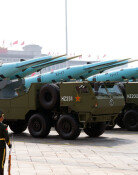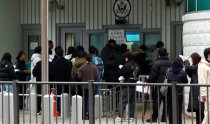[Opinion] Forty-somethings Leave the Secular World Behind and Take to the Mountains
[Opinion] Forty-somethings Leave the Secular World Behind and Take to the Mountains
Posted October. 21, 2004 23:30,
The Korean words for running away from home (gachul, 家出) and leaving home to join the Buddhist priesthood (chulga, 出家) are anagrams. The layperson slams the door on their home out of anger and without clear plans, but those who renounce the world for the priesthood cross the threshold quietly with the larger purpose of redeeming the world. The layperson and the would-be-priest have fundamentally different mindsets in seeking the mountains: the former climbs them in order to enjoy the view and conquer the summit, but the latter enters them in order to listen to their teachings and emulate their wordless wisdom.
There are two types of chulga: dongjin chulga, which occurs when one is around their teens, and the relatively belated kind, which happens when one is in ones forties. Dongjin chulga happens naturally, with a young child joining a Buddhist temple and growing up as part of its community. The forty-something kind happens after a person has spent years in society, either as a result of severe disillusionment or an impulse toward enlightenment. Just as age carries no weight in the strict hierarchy of the military, life in the Buddhist temple does not include preferential treatment according to merely biological seniority. In the temple, the years youve spent since becoming a priest constitute a rank in itself.
Amid prolonged economic recession and deepening social unrest, the number of highly-educated men and women in their forties bound for the Buddhist priesthood is rapidly on the rise. The denomination known as Taego-jong, which allows its priests to have spouses, welcomed an unprecedented 281 new initiates into the first stage of training this year, and two-thirds of that number are in or past their forties. This entering class includes educators who served as school principals, hospital chiefs, high-level public servants who have passed the administrative exam, executives from large corporations, former nuns, and actors on the stage. In other words, these people are not seeking the priesthood in order to make a living, but rather to live well. Two years ago, the Jogye-jong, a denomination based on celibacy, changed the upper limit for the age of new initiates to 40, following a marked increase in older people entering its ranks.
At the training halls for new initiates, you often see visitors seeking husbands, wives, or children who have abruptly left their homes. Although they implore their family members to return home with tears streaming down their faces, the initiates do not give in to the pleas. But the difficult road of self-discipline and asceticism has just begun for these new additions to the priesthood. They soon learn, gradually and thoroughly, that living faithfully as a Buddhist priest is far harder than being buffeted by the secular world. The training and studying are challenges, too. No matter how difficult life in lay society might be, escaping to a Buddhist temple is certainly no solution.
Oh Myeong-cheol, Editorial Writer. oscar@donga.com







